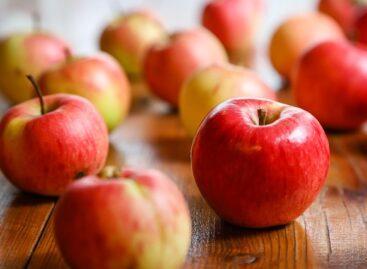Magazine: More room outside?
These days when going to a grocery store or ordering a burger in a fast food restaurant we very often experience the lack of quality labour force or simply the lack of workforce. The Randstad Workmonitor survey examined 34 OECD countries and it found that Hungary is the country where the second highest proportion of respondents, 70 percent think that companies will have to face a labour force shortage in 2016.
In the 1990s and 2000s the Hungarians from neighbouring countries who came to work here made up for the lack of workers, but today these people don’t stop in Hungary but continue their journey to Western Europe. Data from the Central Statistical Office (KSH) indicate that there are 127,000 24-year-old people in Hungary. 15 years ago this number was 182,000 and in addition to this masses of young Hungarians have left the country in recent years. Estimation is that 400,000-500,000 Hungarians are working abroad and London is now one of the biggest ‘Hungarian’ cities.
The problem is that a forklift truck driver earns a gross HUF 160,000 in Hungary but a net EUR 1,500 in the poorest region of Germany. Hungary’s government does its best to employ more people: 54 percent of the active-age population was employed in 1998 – by 2015 this proportion grew to 64 percent. About half of Hungarian workers don’t speak any foreign language – this reflects the weakness of Hungary’s educational system.
There is only one sector where we can recruit foreign workforce to solve the problem of not having enough Hungarian workers: service centres. The 80 centres which employ 30,000 people give a job to many thousand foreigners. Another competitive sector that can keep talented young Hungarians in the country is the automotive industry, where 120,000 workers produce 18 percent of the GDP.
Hungary has to do its best to keep young people home. 50-60 percent of them say they want to work or study abroad but this ratio is even higher, more than 90 percent in the Netherlands and France. The question is: Can we offer these people interesting, well-paying jobs? It is employers in the competitive sector who have the biggest responsibility in this domain: they need to increase wages drastically, redesign work processes and introduce new business models. It is also true that those employers who will do this will have the right to demand more from employees, harder work and better quality.
Unfortunately, according to the Randstad survey mentioned above, in the 34 countries surveyed 51 percent of workers expect a wage increase, while in Hungary this ratio is only 39 percent. In Hungary 47 percent of employees feel they are prepared for living up to the challenges posed by digitalisation – the world average is 78 percent! In the meantime in Hungary there is a debate is about whether there will be enough money for chalk in schools this year; it is time we started looking for the solutions to our problems instead.
Related news
Apples have become significantly more expensive in Hungary
🎧 Hallgasd a cikket: Lejátszás Szünet Folytatás Leállítás Nyelv: Auto…
Read more >KSH: industrial production decreased by 2.7 percent in October compared to the same period of the previous year, and increased by 0.5 percent compared to the previous month
🎧 Hallgasd a cikket: Lejátszás Szünet Folytatás Leállítás Nyelv: Auto…
Read more >The price of slaughter pigs has decreased in Hungary and in the EU
🎧 Hallgasd a cikket: Lejátszás Szünet Folytatás Leállítás Nyelv: Auto…
Read more >Related news
2025 was a black year for the Hungarian food industry: product lines under pressure on multiple fronts
🎧 Hallgasd a cikket: Lejátszás Szünet Folytatás Leállítás Nyelv: Auto…
Read more >The GVH imposed fines of more than 3.7 billion forints on 29 companies in 2025
🎧 Hallgasd a cikket: Lejátszás Szünet Folytatás Leállítás Nyelv: Auto…
Read more >Hungary’s economy in 2025: recovery from slowdown, weaker forint and the increasing importance of corporate strategic decisions 2026 will be a test of resilience
🎧 Hallgasd a cikket: Lejátszás Szünet Folytatás Leállítás Nyelv: Auto…
Read more >






